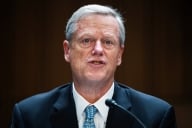You have /5 articles left.
Sign up for a free account or log in.
While the path to the presidency seems to get reworked every year, the route to the provost’s office has remained steady. Professors aspiring to the job could become a department chair, than a dean, and then, with any luck, they could find themselves a few doors down from the president.
But not in Toledo.
Earlier this month, University of Toledo President Lloyd Jacobs told faculty members that he had nominated Scott Scarborough, senior vice president and executive director of the university’s medical center and former chief financial officer, to be the institution’s next provost and executive vice president for academic affairs.
While there has been talk in recent years about individuals with finance and business backgrounds rising to the college and university presidency, the selection of such an individual as provost is an unconventional move that’s likely to generate discussion in higher education circles. Provosts are generally responsible for teaching, research, and service at universities. They tend to have a strong background in teaching and research, and have significant experience in academic administration. Advocates for considering non-academics as presidents frequently cite the provost position, with an academic sitting in it, as one reason why such appointments shouldn't cause alarm.
While Scarborough has a Ph.D. in strategic management and has published academic work on the topic, and while he spent two years at the helm of the university’s medical center, he has little experience in academic administration. He has spent the majority of his career as a university finance administrator, a fact that worries faculty members.
“The announcement caused a lot of concern among faculty,” said Michael Dowd, a professor of economics and chair of the Faculty Senate. “We’re going to have as chief academic officer an individual with exceptionally little background in academic affairs.”
Dowd said he’s not sure if there will be any sort of organized faculty opposition to the decision to appoint Scarborough. The student affairs committee of the university’s board will consider Scarborough’s appointment on Tuesday. If it is approved, the full board will consider the appointment at its next full meeting on Sept. 17.
Jacobs said the appointment of Scarborough represents a need to shake things up in higher education. “It is my belief that higher education across the country at the national level is inbred, and we need to look outside and bring new external skill sets into higher education if we’re going to tackle the … problems we are facing,” he said.
Jacobs said there's a lot of talk about the changing model of higher education and criticism about current practices, citing books such as Academically Adrift and The Faculty Lounges and the need to demonstrate that students are learning and that their degree is worth what the institution is charging. He said Scarborough was the only candidate for the provost job to describe his thinking as “student-centric,” a quality that appealed to Jacobs.
“Too often universities offer the courses they want to offer while students struggle to graduate on time because too few class sections are available to meet student demand. Those days are over,” Jacobs said in a press release. “The debate as to whether students are our customers is over. They have money and they have the choice of where or whether to invest in a college degree. That’s the definition of a customer.”
According to a 2008 survey of provosts by the American Council on Education, the overwhelming majority of provosts were in academic administration roles, such as deans and department chairs, immediately prior to becoming provost. Financial affairs did not merit its own category in the survey, instead falling under “campus official outside academic affairs,” which accounted for 12 percent of provosts in that survey.
While the CFO role might be a good training ground for the presidency, as the required skill sets tend to overlap, there is concern among professors that the same is not true for a CFO-provost transition. When ACE surveyed provosts on the top uses of their time, curriculum and academic programs, supervising and managing personnel, and accountability, accreditation, and assessment topped the list. Budgeting and financial management was only a top-three concern for a quarter of provosts. The survey was conducted before the financial crisis and the “new normal,” so there is a chance that the role has changed in the wake of that.
In the past few years, as business and academic issues become increasingly intertwined, there has been a push by major organizations to get provosts and CFOs to work together, particularly to think strategically about which academic programs can be used to raise revenue and which might be expendable. The general push has been to get provosts to think more strategically and for business officers to recognize competing values within the academic side of the institution.
But advocates of that model have tended to frame it as two administrators representing competing values that can provide different advice to presidents.
Jacobs said that work needs to happen within a single skull. “Value and cost can be weighed in one person rather than externally in two different people,” he said.
At the University of Toledo, he said, the president and two executive vice presidents (the provost and executive vice president for biosciences and health affairs) make strategic decisions about the institution, and other executives, such as the chief financial officer and the vice president for administration, fall under those roles. In the provost role, then, he wants somebody who can weigh academic and financial values.
If the board approves Scarborough, it might mean a change in how the university approaches questions. Recent surveys by Inside Higher Ed found that provosts and CFOs viewed cuts to academic services over the past few years differently, and CFOs were much more likely to say they could make deeper cuts without harming academic quality.
The selection of Scarborough might be specific to Toledo’s current situation rather than pointing to an emerging trend. Toledo has seen a lot of turnover in the provost role in the past few years. The current provost, William McMillen, was appointed to the role in May 2011 after serving in an interim capacity for a year. He also serves as the vice president for governmental affairs and chief of staff to the president.
His predecessor, Rosemary Haggett, left the university after only three years to become vice chancellor for academic affairs and student centeredness at the University of North Texas.








